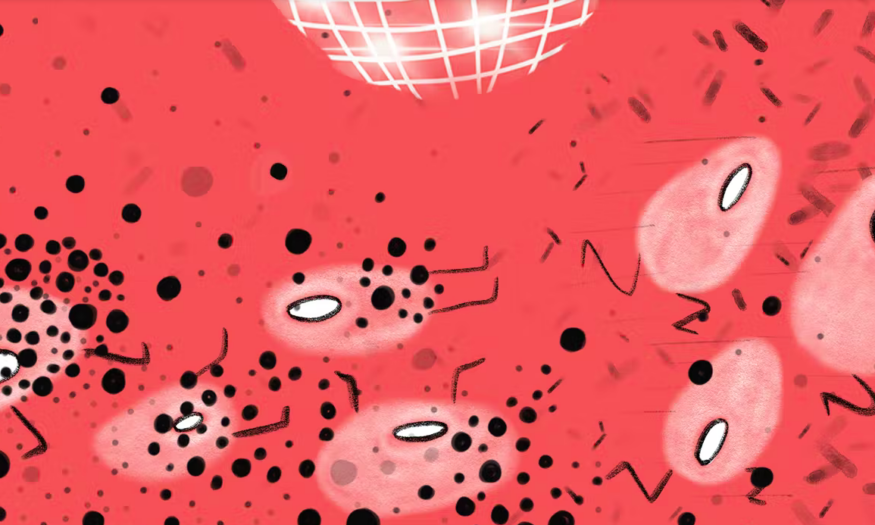Renaming the Hymen: The Vaginal Corona
 Image by Natural Cycles
Image by Natural Cycles
-
Topics Include:
101
Cervical Mucus
Vagina
Vaginal Corona (Hymen)
Vulva
Revised by Our Bodies Ourselves Today Sexuality Content Experts, July 2022
This content is adapted from an earlier article by Our Bodies Ourselves Anatomy & Menstruation Contributors.
The vaginal corona is generally known as the hymen. However, it was renamed in 2009 by The Swedish Association for Sexuality Education (RFSU), in an attempt to dispel many of the myths surrounding hymens.
Made up of thin, elastic folds of mucous membrane located just inside the entrance to the vagina, the vaginal corona has no known function. It is probably a remnant of fetal development.
Many people wrongly believe that the vaginal corona is a thick membrane that entirely covers the vaginal opening and ruptures the first time you have intercourse (or any kind of insertive vaginal sex).
In fact, the vaginal corona is typically present as a semi-circular ring of tissue just inside the vaginal opening that changes appearance and consistency with age. At birth, most vaginal coronas have many folds and are puffy due to the effects of estrogen from the birthing parent. In the months after birth, the corona becomes thin, translucent, and tender to the touch. Around puberty, the hymen changes shape and texture again, returning to a similar state as immediately after birth.
The vaginal corona tissue is typically shaped in a way that allows menstrual fluid to leave the body. But in rare cases, the hymen covers the entire vaginal opening. This is called an imperforate hymen. A person with an imperforate hymen will experience monthly cramping and discomfort without the appearance of menstrual blood. In these cases, the hymen can be surgically opened to release accumulated menstrual fluid and prevent recurrence.
More commonly, a hymen band may be present across the vaginal opening, allowing menstruation but preventing tampon insertion. If the opening is very small or partially obstructed, minor surgery can correct this.
The mucous membrane that makes up the vaginal corona may be tightly or more loosely folded. It may be slightly pink, whitish, or almost transparent. The vaginal corona may resemble the petals of a flower, or it may look like a jigsaw piece or a half-moon. Since the vaginal corona isn’t a brittle membrane, the sensation when you first stretch out the mucous tissue folds — whether you’re inserting a tampon, masturbating, or having insertive sex — is a highly individual experience.
Some people feel little or no discomfort. Others, often those with a thicker or more extensive vaginal corona, experience some pain. There may be minor tears in the mucous folds that hurt, and sometimes there may be a little bleeding. Pain can often be managed or avoided through the gradual stretching of the tissue.
In addition to individual variation, the vaginal corona may tear or shift position during exercise, masturbation or tampon use, or during other forms of sexual and non-sexual vaginal penetration. Because of this, and despite longstanding patriarchal myths, no one can look at a vaginal corona and know whether a person has had vaginal intercourse or other penetrative sex.
Indeed, after coining the term vaginal corona, RFSU said in a statement: “The mythical status of the hymen has caused far too much harm for far too long,” and the hymen has wrongly been “portrayed as the boundary between guilt and innocence.”
Let’s reclaim the vaginal corona as just another part of our bodies to enjoy, deal with, or ignore as we wish.
Related Articles:






